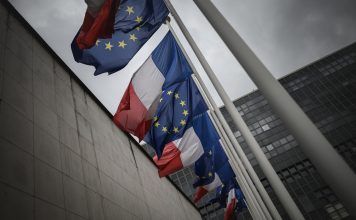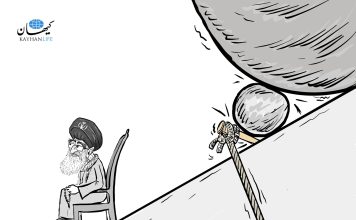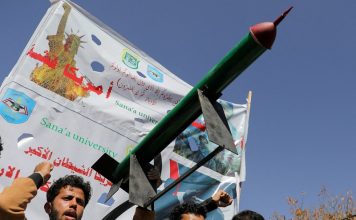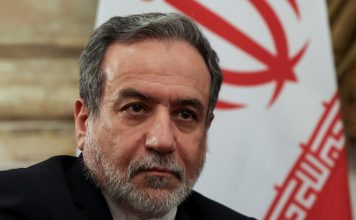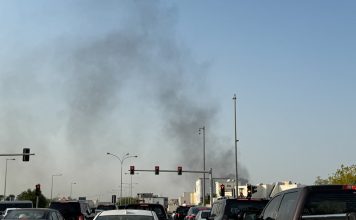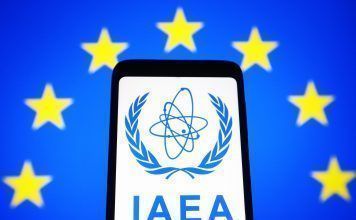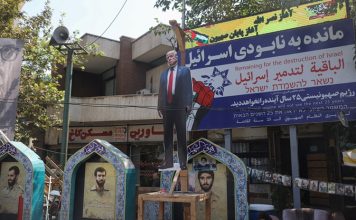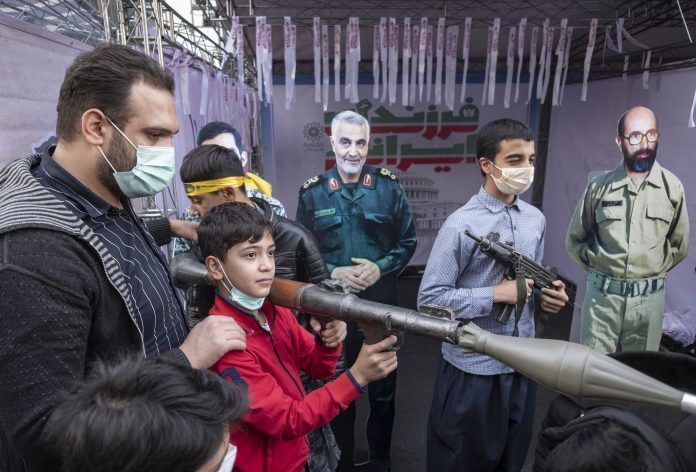
As part of its broader efforts to tighten control over the Iranian public, the Islamic Republic has recently announced an overhaul of the educational system, which includes a wholesale purge of academia, replacing experienced school teachers and tenured university professors with unqualified seminarians and members of the Basij (volunteer militia.)
The measure, articulated in a series of directives and guidelines by the Majlis (Iranian Parliament), the Ministry of Education, and the Ministry of Science, Research and Technology, calls for replacing the secular curriculum in schools and universities with Islamic ideology as part of the state’s “cultural revolution.”
Although the regime’s efforts to model people’s lives on strict Islamic values in the past 43 years have failed, it has inflicted irreparable harm to the country’s education system.
The Ministry of Science, Research and Technology and the Ministry of Health and Medical Education has had plans to employ clerics and seminarians as faculty and administrative staff for years. The recent measures by the government are part of its “cultural revolution” to impose more significant restrictions on higher education and promote its ideological agenda in universities.
In the aftermath of the 1979 Islamic Revolution, student movements supported the reformist faction within the regime, ultimately benefiting the regime. All of that changed during the 2017-18 nationwide protests. Tehran University students joined ordinary Iranians in the streets, shouting: “Conservatives, reformists, the end has come,” sending a clear message to all factions within the Islamic Republic that the student movement had severed its ties with the regime.
The student movement posed its most serious challenge to the regime in the 2022 protests, becoming a significant part of the national uprising. During their marches on university campuses, students carried the Derafsh Kaviani (the ancient Persian royal standard) and sang national anthems instead of leftist slogans.
High school students also had an impressive presence in last year’s protests. The young generation of Iranians played a significant role in challenging the oppressive regime that had suffocated schools for four decades.
Students who for years started their school days with joyous songs instead of dark ideological slogans, and their parents, who were subjected to Islamic indoctrination immediately after the Revolution, now stand together in their defiance of the regime.
[aesop_image img=”https://kayhanlife.com/wp-content/uploads/2022/12/2022-12-01T083508Z_194603736_OWSPLP91VGSIHTWW35EH7AU6SCLX01G_RTRMADP_BASEIMAGE-960X540_IRAN-PROTEST-CONFLICT.jpg” panorama=”off” credit=”FILE PHOTO: Girls At Iranian State School Protest Without Hijabs. REUTERS./” align=”center” lightbox=”on” captionsrc=”custom” captionposition=”left” revealfx=”off” overlay_revealfx=”off”]
Meanwhile, Iranian schools face a critical shortage of teachers at the start of the school year. Besides the schools in Tehran, classrooms in impoverished regions like the southeastern province of Sistan and Baluchestan have no teachers.
The situation has reportedly reached a critical level, forcing some schools to ask parents of students and retired teachers as old as 70 to work as substitute teachers.
In April, Hamidreza Hajibabaei, chair of the Majlis’ Cultural Faction, said the country faced a shortage of 300,000 teachers. According to recent reports, there is a shortage of 4,000 teachers in the capital, Tehran, and 15,000 in Sistan and Baluchestan Province.
While it is becoming clear that the Ministry of Education has no money to hire new teachers, some teachers do not want to work in an atmosphere where ideology controls the curriculum.
The shortage of teachers coincides with the government’s massive purge of school principals.
On Sept 21, Iran’s Minister of Education, Rezamorad Sahraei, said the government had replaced nearly 20,000 school principals this year.
“Nearly 20,000 school principals have been replaced this year as part of the plan to reform our schools,” the Iranian Students News Agency (ISNA) reported, quoting Minister Sahraei. “Also, 7,000 additional schools have been marked for the same change. We will reform 5,000 schools this year.”
Mr. Sahraei’s “reform” program refers to the government’s “Fundamental Transformation of Education System Document,” which further enhances the pervasiveness of Islamic doctrine in school curriculums.
The Supreme Council of the Cultural Revolution (SCCR) enacted the “Fundamental Transformation of Education System Document” after the Supreme Council of Education approved the scheme.
“The Fundamental Transformation in the Education System Document, which drives its impetus from the Islamic system’s great ideals, must operate within the framework of the [20-year National] Vision of 2025,” reads the introduction to the Fundamental Transformation of Education System Document.
Union activists believe the massive purge of school principals, teachers, and university professors resulted from their support for the national uprising sparked by the death of Mahsa (Zhina) Amini, a 22-year-old Iranian woman accused of wearing “improper hijab,” who lost her life on Sept. 16, 2022, while in the custody of the Morality Police in Tehran.
The government plans to replace experienced teachers with “valued” and “trusted” seminarians, clerics, and Basij members, in line with the Amin Project (religious teaching). Under the Amin Project, developed in 2016, Muslim clerics must spend 30 hours a week teaching religious doctrines in schools.
Iranian Government Conducts Massive Purge of School Principals
The Majlis passed a resolution last year, allowing the Ministry of Education to hire seminarians as qualified school teachers. In April, Sahraei said the Ministry of Education was training 27,000 new teachers, most of whom were members of Basij or security forces.
The government has increased its efforts to promote Islamic ideology in schools. The Majlis recently passed the “Hayat Tayyaba” (a virtuous life) resolution, allowing the establishment of 200 Koranic schools.
Under the scheme, the Education Ministry — despite its severe budget deficit — must allocate some of its resources to establish Koranic schools, enabling the delusional architects of the plan to help students achieve “a virtuous life.”
The Education Ministry’s new recruitment guidelines require all applicants for teaching positions to hold a “koranic recitation” certificate. Earlier in October, Minister Sahraei instructed all schools in the country to allocate 30 minutes for daily group prayers.
The government also plans to revamp the country’s higher education system to increase its ideological and security hold over universities. Many prominent academics with long service records have been fired or forced into early retirement and are replaced with “trusted” members of state media, clerics, Basij forces, and Koranic reciters.
The government has also issued strict dress codes in universities, reportedly formed gender-based classrooms, and placed many “Guidance Patrol” units on university campuses. The recent attempt to intimidate academics is a throwback to the months following the 1979 Islamic Revolution (60s decade) when the regime systematically persecuted university faculty under its “cultural revolution” ideology.
On Oct. 23, Iranian lawmakers debated a report by the Integration Commission of the Majlis on the Seventh National Development Plan’s Article 97, titled “Educational Priority,” under which the Ministry of Science, Research and Technology must work with the Supreme Council of Seminaries to “promote humanities” and “improve textbooks on the relevant subjects.”
The bill’s “subsection 20,” titled “Improving Education, Technology, and Research,” will empower the Supreme Council of Seminaries to revise university textbooks. According to Clause-1 of Article 97, the Ministry of Science, Research and Technology and the Ministry of Health and Medical Education have one year from when the bill is passed to change all textbooks per the new education guideline.
The recent legislative move to give religious institutions more significant influence over university curriculum comes two years after the Ministry of Science, Research and Technology and the Supreme Council of Seminaries signed the “Unveiling Seminary’s Significant Scientific Achievements in the Humanities” on Dec. 15, 2020.
Abdolrasoul Hajeri, the director of the Supreme Council of Seminaries’ Scientific Centers, then said: “Humanist ideas which came from the West are one dimensional, but Islam offers a new view which needs work to reach maturity.”
“Seminaries are in the theoretical and rhetorical phase,” Mr. Hajeri noted. “We do not invest in disseminating work as much as we do to produce them. An author thinks that their work is finished after publishing a book. However, promoting and informing are more important. The problem is that works by seminaries have small circulation.”
Although the Islamic Republic has launched a brutal attack on the educational system, students, and academics by imposing its ideological agenda, it does not seem that the regime can use schools and universities again to further its goals.
Both Pahlavi monarchs, the late Mohammad Reza Shah (1919-1980) and his father Reza Shah (1878-1944), invested heavily in developing the country’s educational system. However, shortly after the 1979 Revolution, the Islamic Republic used schools and universities to promote Islamic ideology.
The Islamic Republic has invested heavily in the education system in the past four decades, hoping to indoctrinate generations of young Iranians to perpetuate the doctrine and aims of the 1979 Islamic Revolution.
In this asymmetrical fight, on one side is the regime, which has used all of the tools at its disposal to turn the education system into a state apparatus, and on the other are school and university students who have resisted and pushed back against the Islamic Republic at every juncture.
The dire consequence of the Islamic Republic’s deliberate effort to destroy the educational infrastructure, a legacy of the two late Pahlavi monarchs, has severely weakened Iran’s education system. As a result, the country has experienced unprecedented school dropouts and massive migration of school and university students. The continued human flight capital has depleted Iran of its skilled human resources, resulting in the country losing a core portion of valuable individuals.

